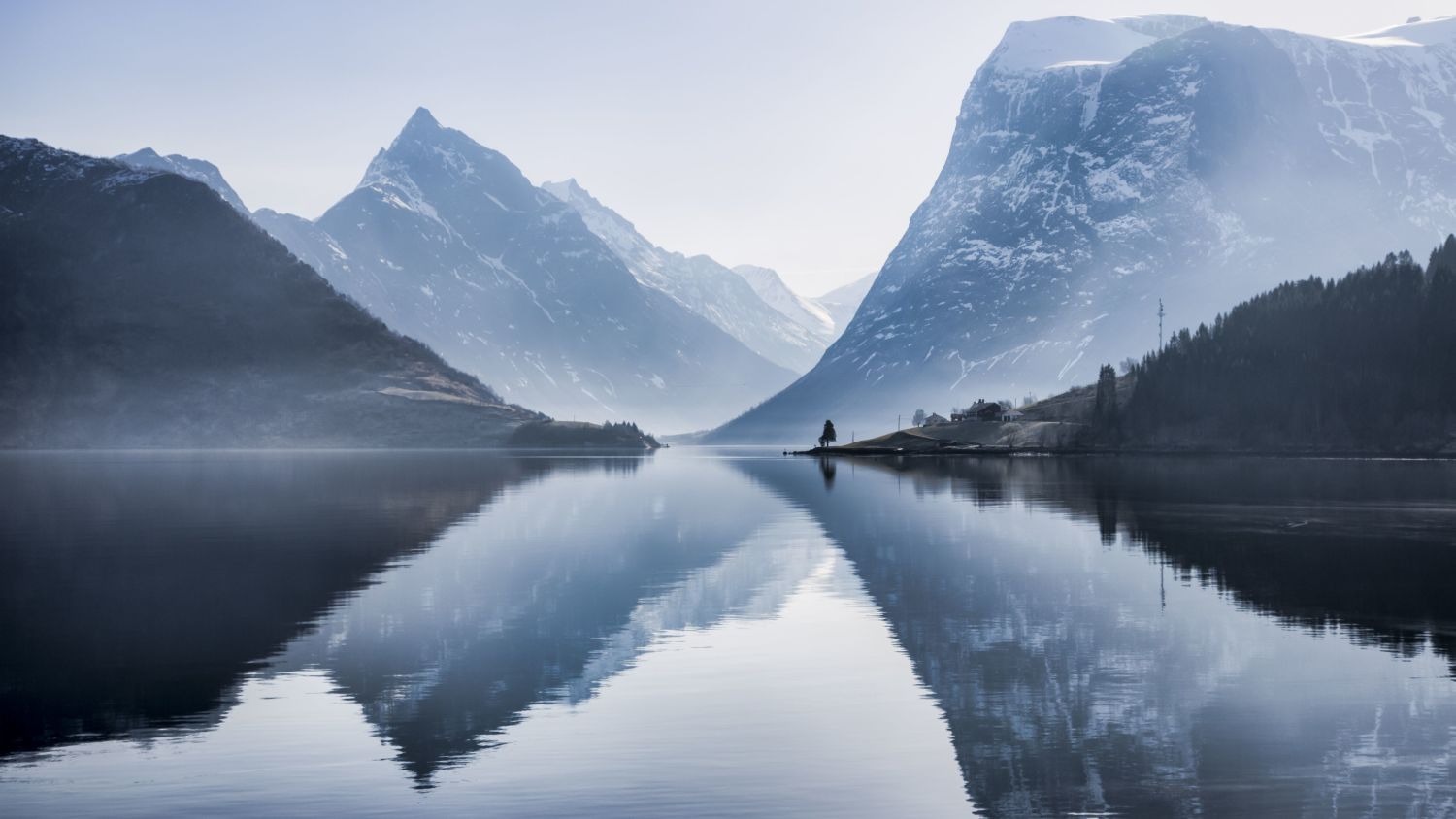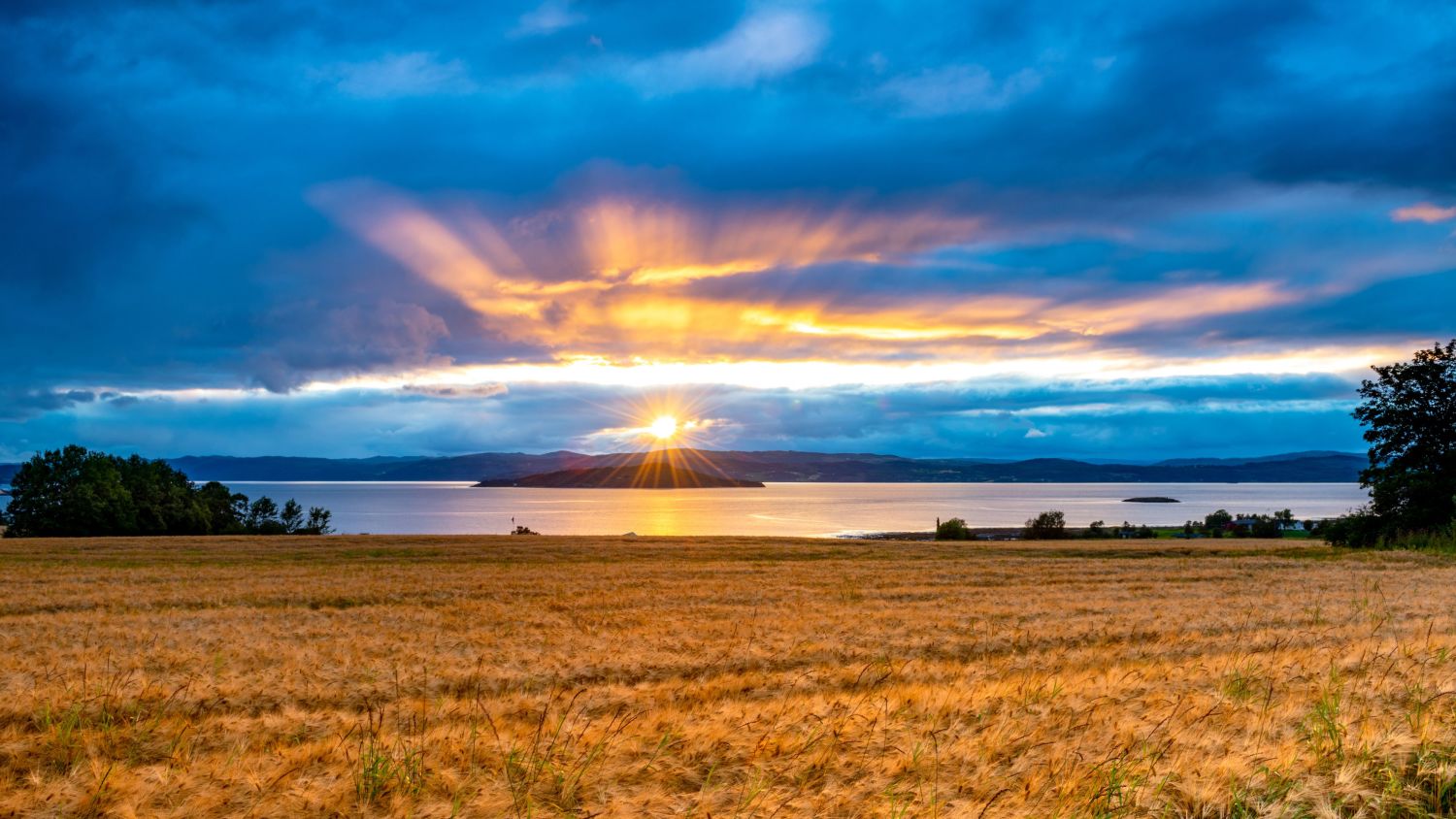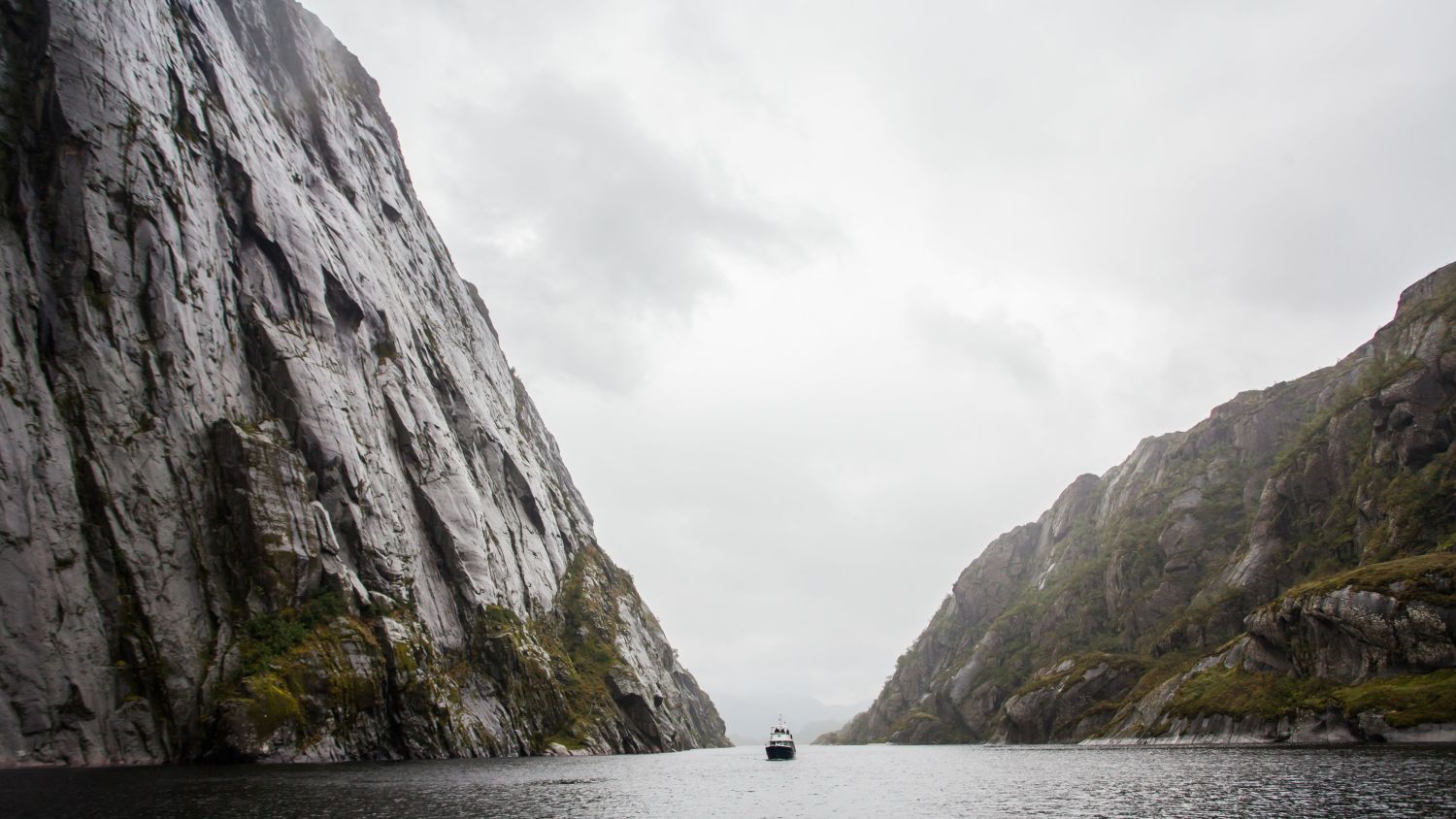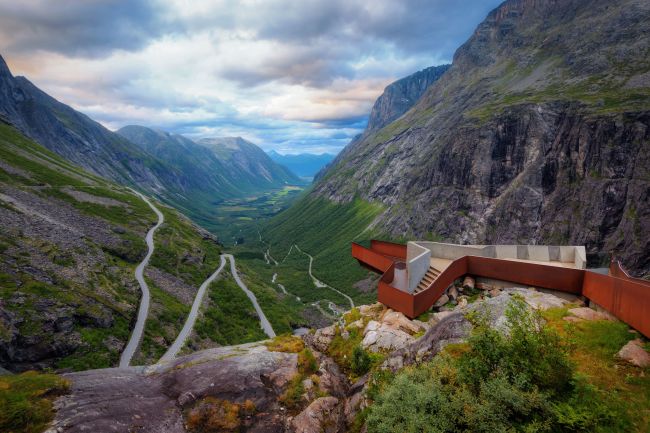Fjords
Fjords
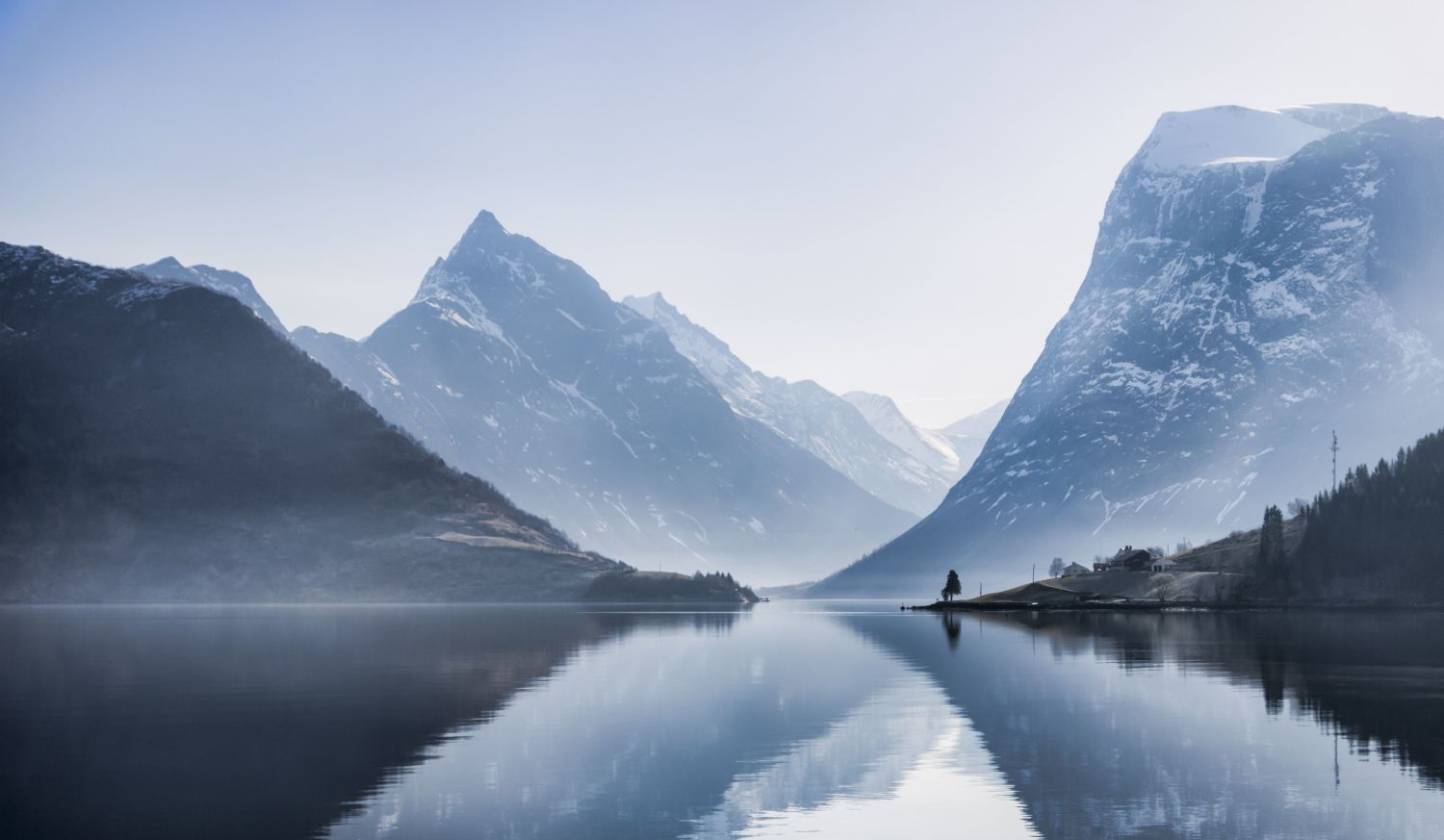
Norway's beautiful fjords

Few places in the world have such rugged coastlines with long branching fjords. In Norway, there are almost 1,200 fjords. It is hardly surprising therefore that it is the Norwegian word for fjord that has entered so many other languages, including English. The word originally means "where one fares through".
There are 900 fjords along the coast between Bergen and Kirkenes. One of these, Sognefjord, at 205 km long and 1,308 m deep, is the world's longest ice-free fjord.
The fjords were formed when the weight of thousands of metres of ice cut through the landscape on its way to the sea. The giant ice cap scraped, scrubbed and ground the bedrock beneath it, creating deep, new valleys. As sea levels rose, these valleys filled with water creating the fjords of today. The fjords can extend inland to form a network of new fjord branches. The word fjord is also used to describe open stretches of sea, large, wide bays that reach inland and narrow straits between islands.
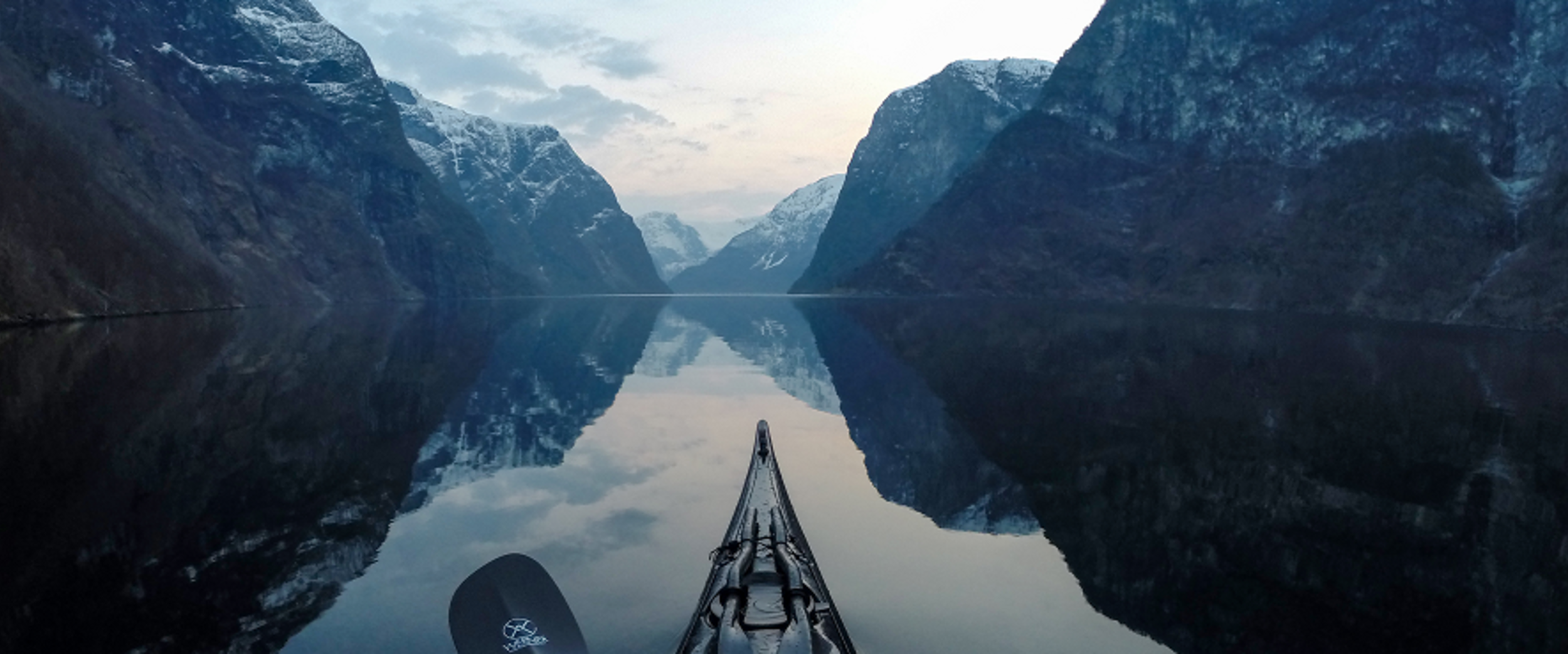
Seven of Norway's 1,200 Fjords
Geiranger Fjord
Along the fjords, people have clung to steep slopes or mountain ledges as in the Geiranger Fjord. The mountainous landscape of Geiranger is on UNESCO's World Heritage List. On Havila Voyages, you can sail through this cultural landscape that tells us about people's ability to make a living almost no matter how steep it is around them.
It was warm on the sunny slopes, and it was even possible to grow heat-loving plants such as tomatoes and apricots here. There were salmon in the fjord, and further inland there was room for sheep and goats. Parents had to resign themselves to tying very young children with ropes when they were playing to ensure that they did not fall off the cliff.
In summer and autumn, the trip to Geiranger departs from Ålesund on the northbound voyage.
Storfjorden
Geiranger is part of Storfjord, one of the major fjord systems along the coast. From the furthest point in the sea, Storfjord that flows into Sulafjord is 110 kilometres long, making it one of the ten longest fjords in Norway. The maximum depth in the fjord is 672 m.
There are many abandoned fjord and mountain farms along the fjord. Founded in 1975, Storfjordens venner, a society for the preservation of abandoned farms in Storfjord, has been active in the rebuilding, restoration and maintenance of buildings and cultural landscapes.
More than 130 buildings have been restored along the fjord. The voyage along Storfjord makes this into a trip to a living museum that provides insight into what life was like in former times.
Hjørundfjorden
Hjørundfjord is the royal branch of the Storfjord system. It extends into the jagged Sunnmøre Alps, whose peaks rise as much as 1,600 m above the fjord and are covered in snow even during the summer. The mountains are beautiful but dangerous. Big avalanches along the fjord are common during the winter and have claimed many lives.
Hjørundfjord was discovered by European cruise tourists in the late 19th century, and in the early 20th century it also became a holiday destination and playground for European royals and aristocrats. The German emperor, Wilhelm II, King Oscar of Sweden and Queen Wilhelmina of the Netherlands visited Hjørundfjord several times.
From the fjord, a spectacular valley, Norangsdal, extends in through the wild mountains. It is said to have been visited by seven queens, including the current queen consort of Norway, Queen Sonja. One of the mountains, the majestic Slogen, is 1,564 m high. Queen Sonja is a keen mountain hiker, and Slogen is one of her favourites.
Nærøyfjorden
Nærøyfjord is one of the most beautiful and wildest fjord branches of Sognefjord. In 2005, this fjord area with its waterfalls and mountains was designated as a UNESCO World Heritage Site. One of the reasons that the fjord was added to the UNESCO list is because of the pristine landscape.
The fjord is 17 km long and only 250 m wide at its narrowest point, while the mountains tower to over 1,700 m. There are glaciers and snow up there all year round, while down along the fjord summers are warm and the climate is mild.
You can sail along the fjord on a Havila Voyages' excursion from Bergen. This gives you a view of the roadless farms that date back to the time when the fjord was the main road. Many have now been abandoned, but if you are lucky, you will see goats grazing on the steep fields.
The area was used for inspiration for the Disney movie Frozen and for the filming of the TV series, The Vikings.
Trondheimsfjorden
While some of the fjords are narrow and wild, Trondheimsfjord is broad and surrounded by gentle slopes and low mountains. At 126 km in length, Trondheimsfjord is the third longest fjord in Norway, but it is also a large fjord in many ways. At its widest, the fjord is almost 13 km wide, and it has almost 30 offshoots and fjord branches.
With Havila Voyages you sail far into the fjord and into Trondheim. You will be sailing in historic waters here. Trøndelag had powerful clans during the Viking Age, and there was a lot of traffic along the fjord. Trondheim was also a well-known pilgrimage destination in the Middle Ages, and many people came by sea.
Some of Norway's best salmon rivers flow through the agricultural areas surrounding the fjord, and more than 90 different species of fish have been found here.
Vestfjorden
Norway's 1,200 fjords are long and short, wide and narrow, with some extending far inland, while others are almost open areas of the sea. Vestfjord is in the latter category. An open fjord, 80 km wide at the far end.
Havila Voyages crosses Vestfjord when sailing between Bodø and Stamsund. Inland, smaller fjords meander between high, steep mountains, while on the other side of Vestfjord there is the Lofoten Wall, a ridge of peaks measuring 160 km in length that resulted from the earth's crust curling up millions of years ago.
Vestfjord is also where the famous Lofoten fishing takes places. The world's bacalao traditions originated here with the region's large production of dried fish and klipfish, and since Viking times, fishing for cod that come to Lofoten to spawn has been one of the most important sources of food and income in Northern Norway.
Trollfjorden (The Trollfjord)
Trollfjord is another spectacular fjord you visit with Havila Voyages. At its narrowest, the fjord is only a hundred metres wide and the mountain walls shoot over a thousand metres up from the sea so close to the side of the ship that it almost feels like you can touch them. The northern wall is smooth-polished monzonite, the oldest rock type in Norway.
Inside, the fjord widens so that the ship can turn around and sail out again. You can think about the great battle that took place in the fjord in 1890. The fjord was full of fish. The large steamboats closed off the fjord and locked in the wealth, while the fishermen in the smaller boats were locked out. It ended with a battle that has entered into both Norwegian literature and art. And then the battle cry rang out between the steep mountainsides without fear of waking the trolls who gave the fjord its name...
The Trollfjord flows into the Raftesundet Strait on the voyage between Svolvær and Stokmarknes. Visits to the Trollfjord may be cancelled in bad weather if there is a risk of avalanches or similar.
People appear tiny inside Trollfjord, where the mountains shoot up over 1,000 m from the sea.

Travel to the fjords
Norr- och södergåendeRundresa
Bergen → Kirkenes → Bergen
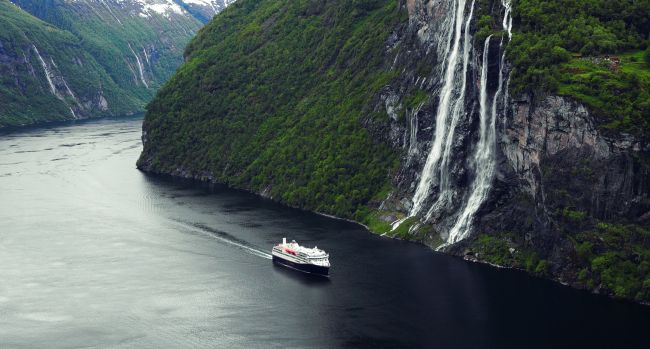
NorrgåendeKustresan norrut
Bergen → Kirkenes
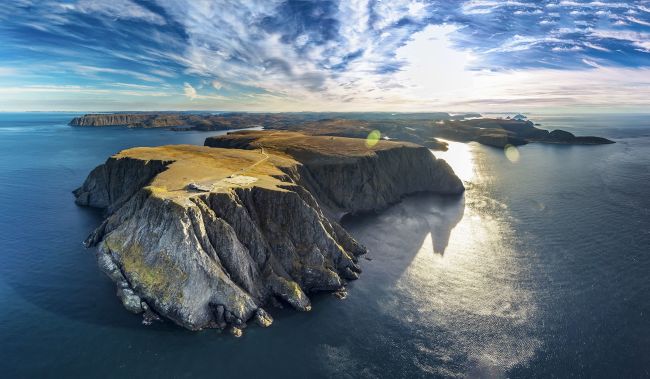
NorrgåendeMagiska Fjord-Norge
Bergen → Trondheim
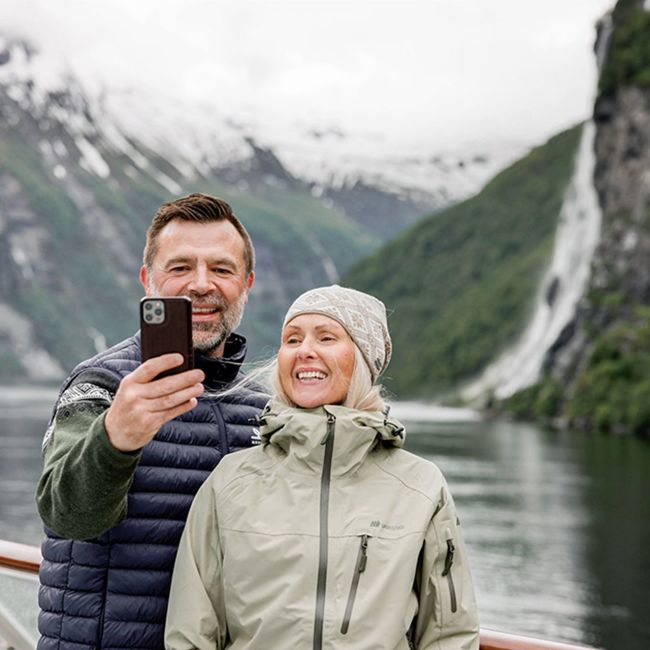
Excursions in the fjords


